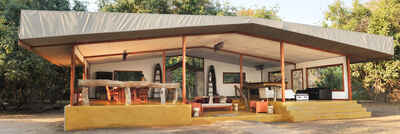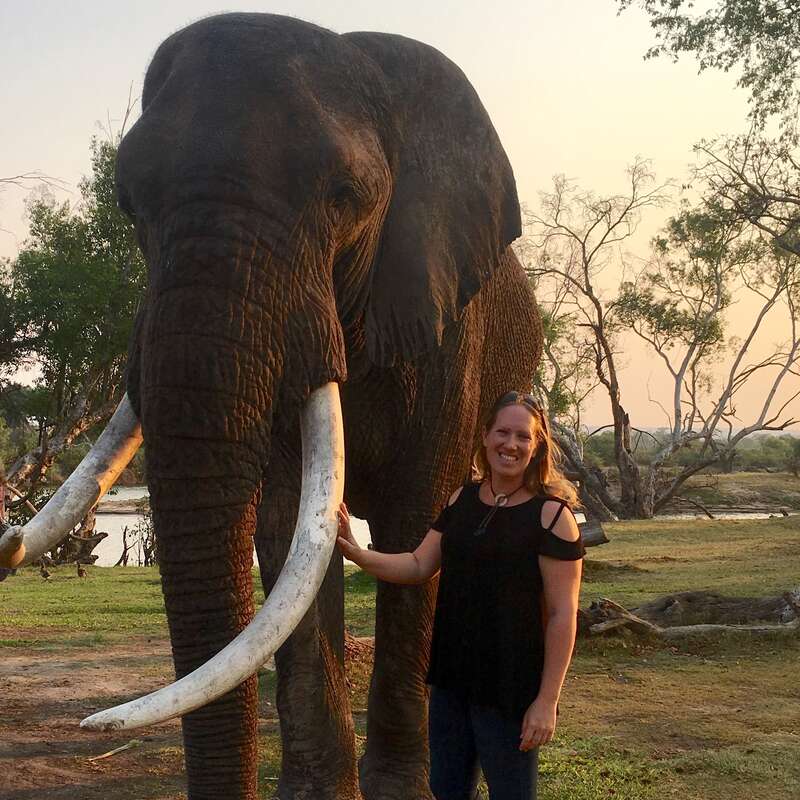About Potato Bush Camp
Potato Bush Camp is located in a game-rich area of the Lower Zambezi National Park, overlooking the confluence ...
... of the Chifungulu Channel and the Zambezi River. The camp is small but fairly luxurious, and is open for a longer season than other camps in the area.
Potato Bush is a newer camp, and has a lot to live up to when compared with its more luxurious sister next door, as well as some of the other excellent luxury camps in the Lower Zambezi - but Potato Bush Camp certainly met and exceeded our high expectations when we visited. We found it very difficult to find any significant faults with it. It’s small and intimate and we loved the unique, unusual design, the variety of the activities and we think it’s run very well by a great little team.
Our view
Potato Bush is a newer camp, and has a lot to live up to when compared with its more luxurious sister next door, as well as some of the other excellent luxury camps in the Lower Zambezi - but Potato Bush Camp certainly met and exceeded our high expectations when we visited. We found it very difficult to find any significant faults with it. It’s small and intimate and we loved the unique, unusual design, the variety of the activities and we think it’s run very well by a great little team.
Accommodation
4 tented chalets
Children
Best for aged 12+
Open
1 April to 30 November
Activities

4WD Safari

Birdwatching

Boat trip

Canoeing

Fishing

Guided walking safari

Night drive
Traveller reviews of Potato Bush Camp
20 real, un-edited reviews from Expert Africa's travellers.
Arrived 29 Sep 2024, 4 nights
"Potato Bush Camp review"
Overall rating: Excellent
Arrived 10 Jun 2024, 5 nights
"Idyllic location"
Overall rating: Excellent
Arrived 17 Sep 2023, 4 nights
"Potato Bush Camp review"
Overall rating: Excellent
Arrived 10 Sep 2023, 4 nights
"Potato Bush Camp review"
Overall rating: Excellent
Arrived 25 Jul 2023, 4 nights
"Potato Bush Camp review"
Overall rating: Excellent
Arrived 7 Aug 2022, 6 nights
"Potato Bush Camp review"
Overall rating: Excellent
Arrived 7 Aug 2022, 3 nights
"Potato Bush Camp review"
Overall rating: Excellent
Arrived 20 Jul 2022, 4 nights
"Potato Bush Camp review"
Overall rating: Excellent
Arrived 20 Jul 2022, 4 nights
"Potato Bush Camp review"
Overall rating: Excellent
Arrived 30 May 2022, 4 nights
"Potato Bush Camp review"
Overall rating: Excellent
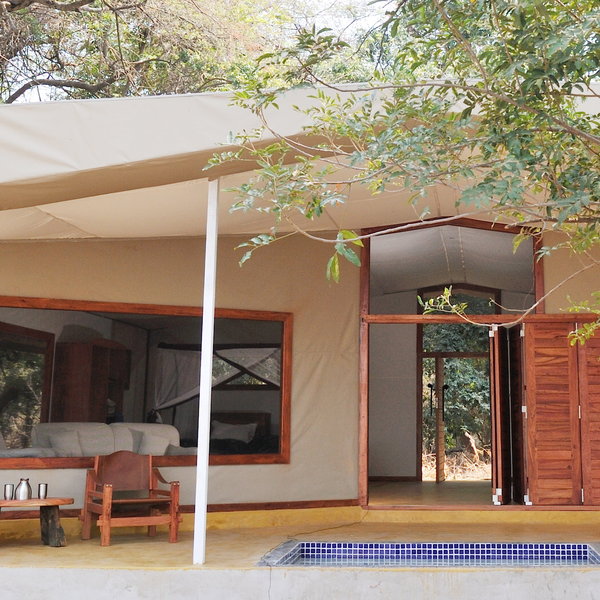
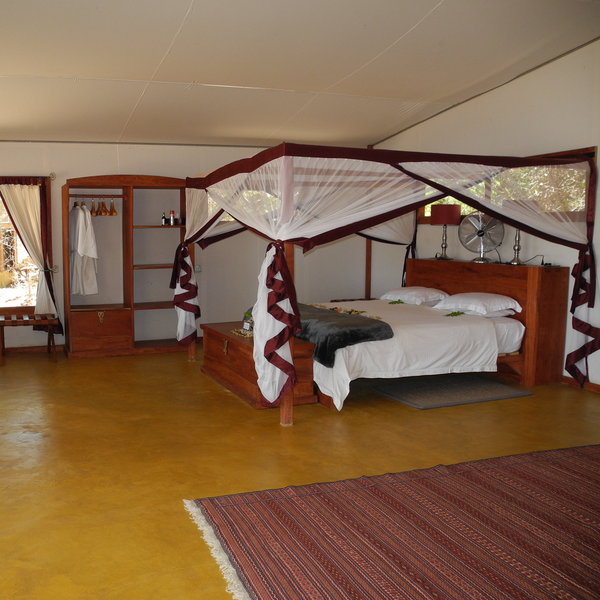
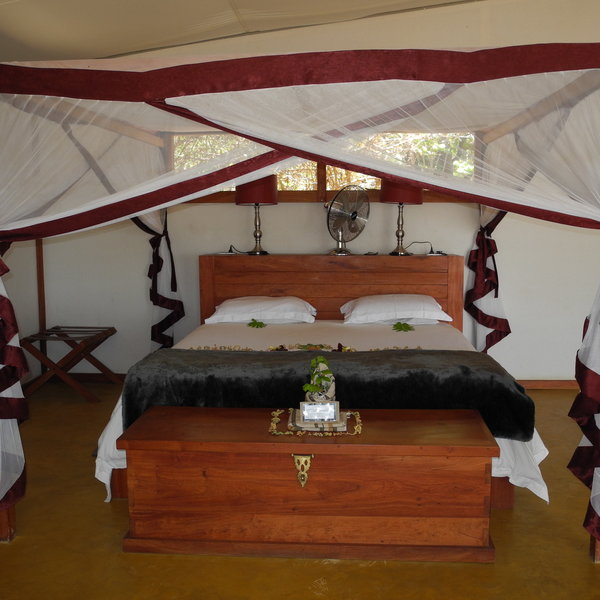
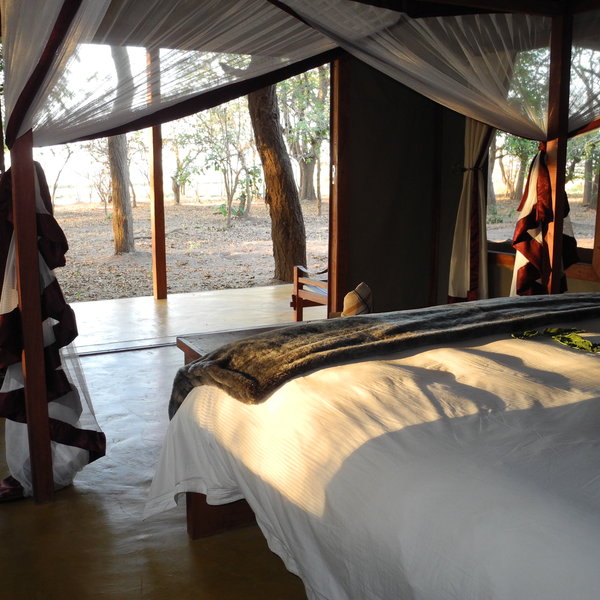
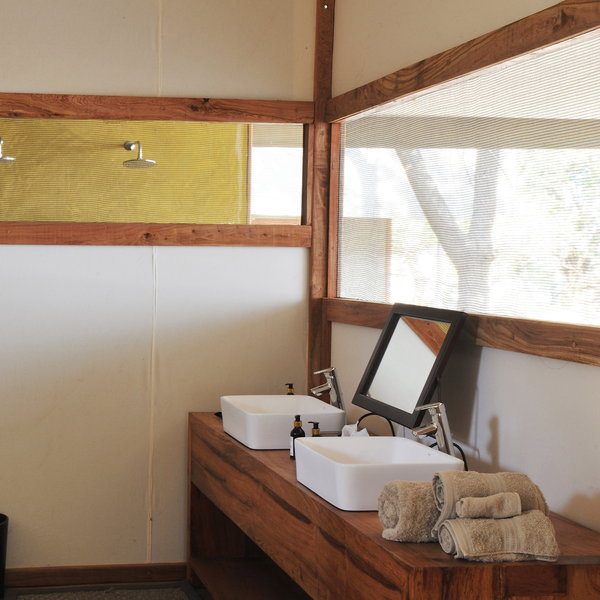
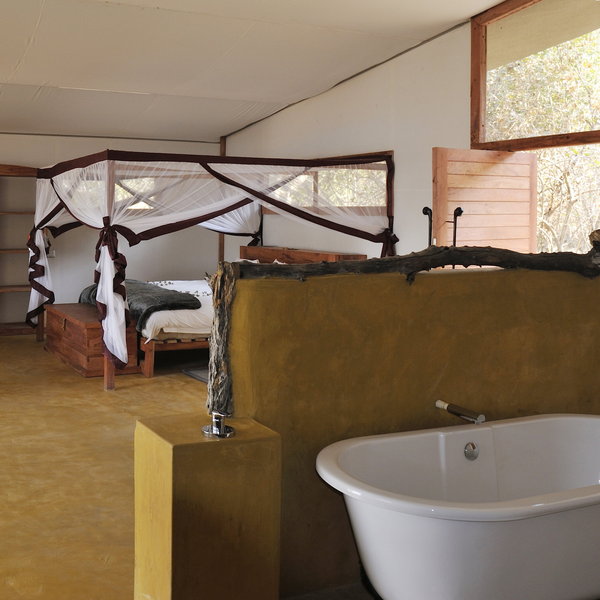
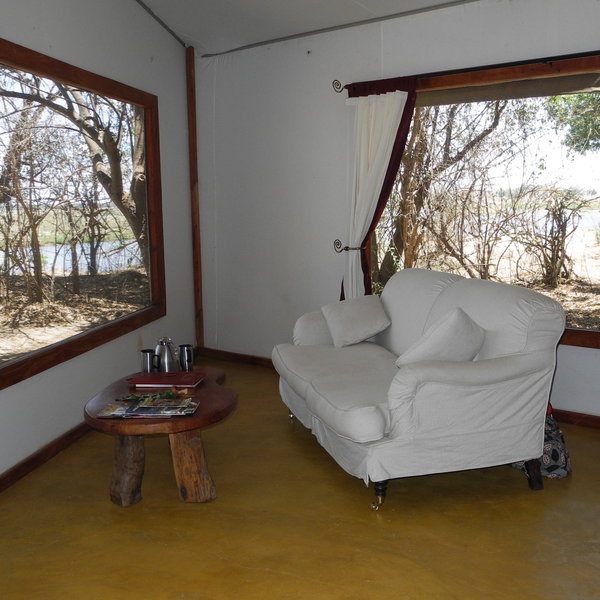
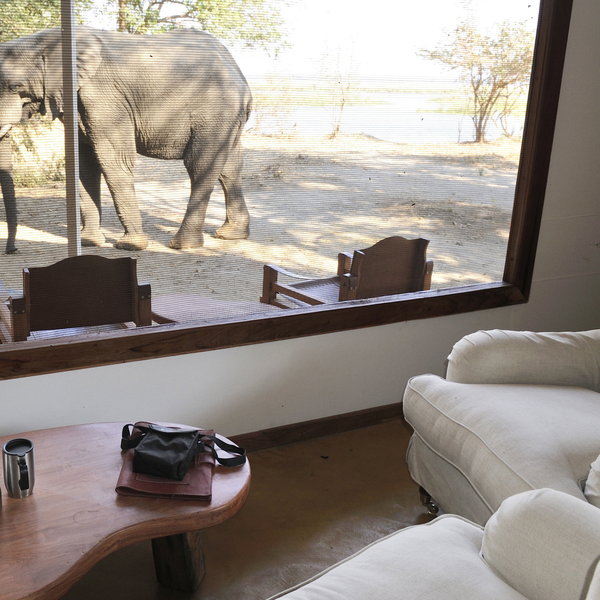
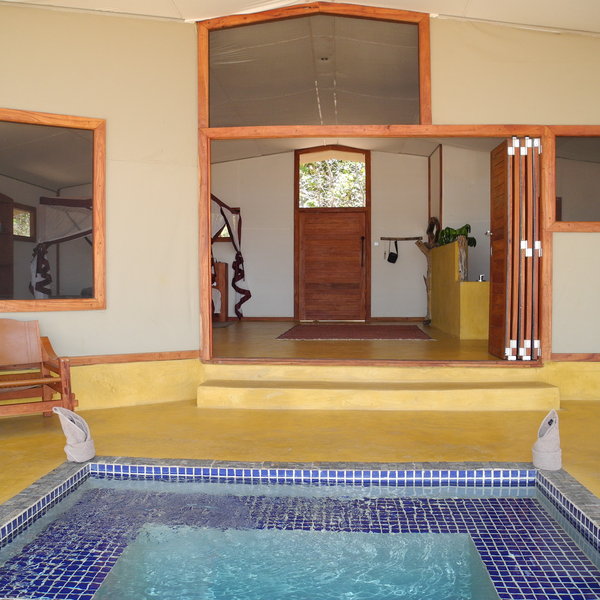
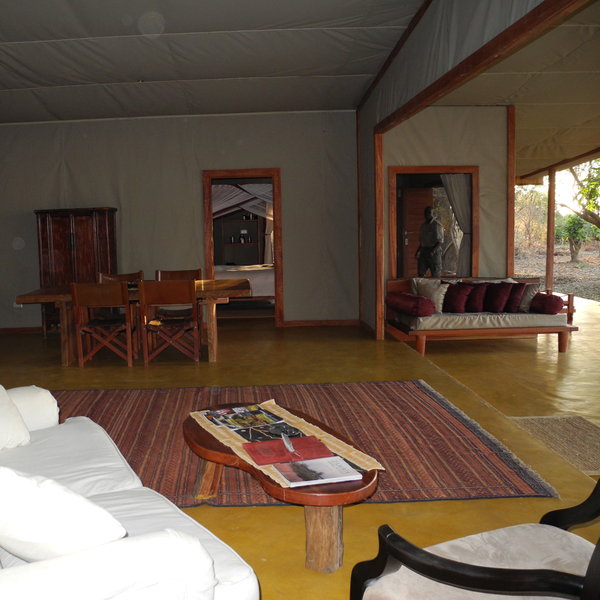
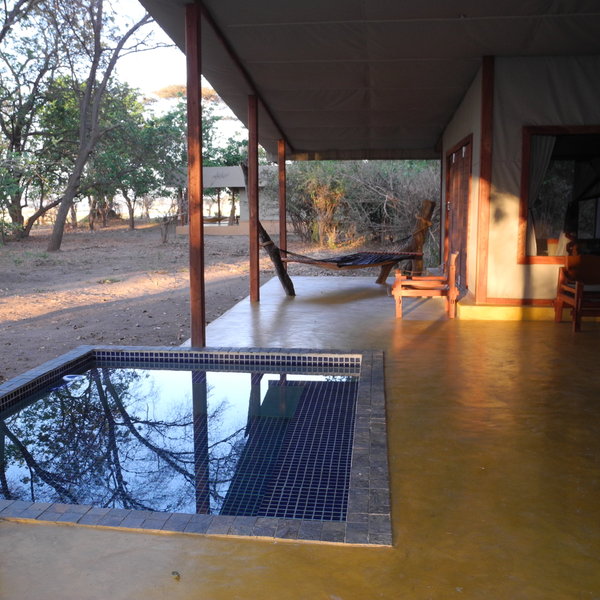
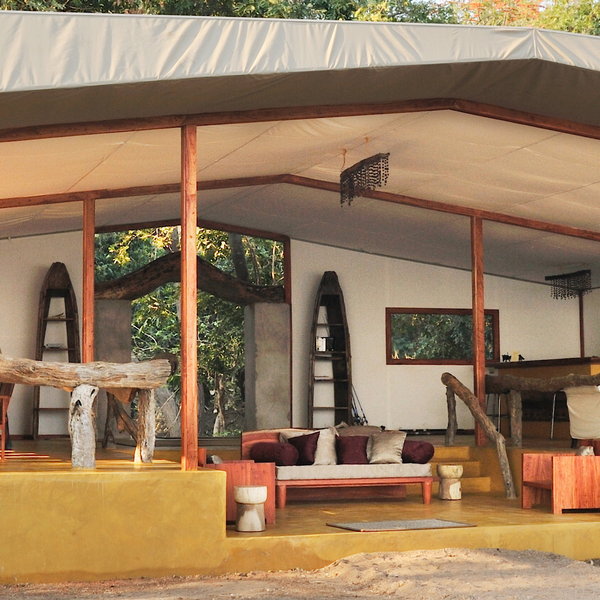
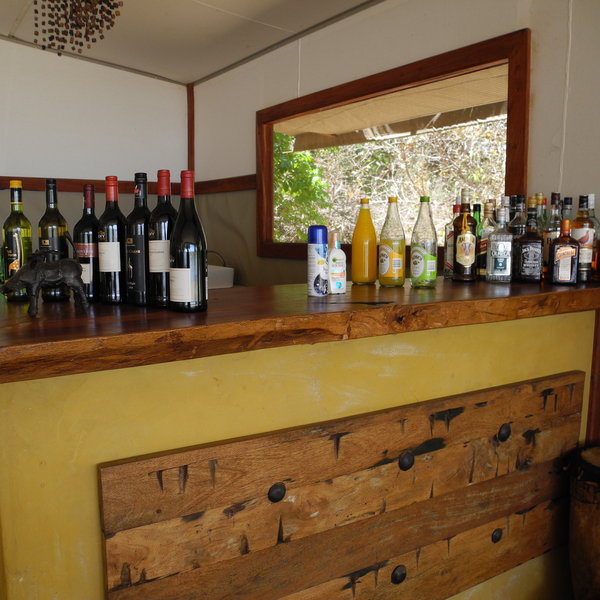
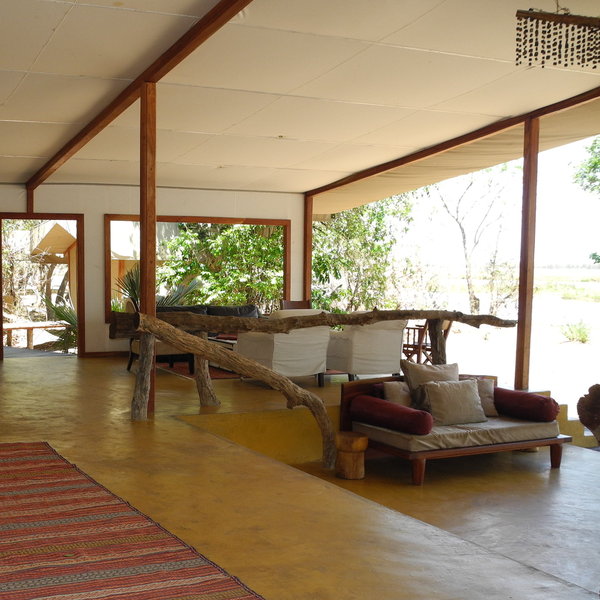
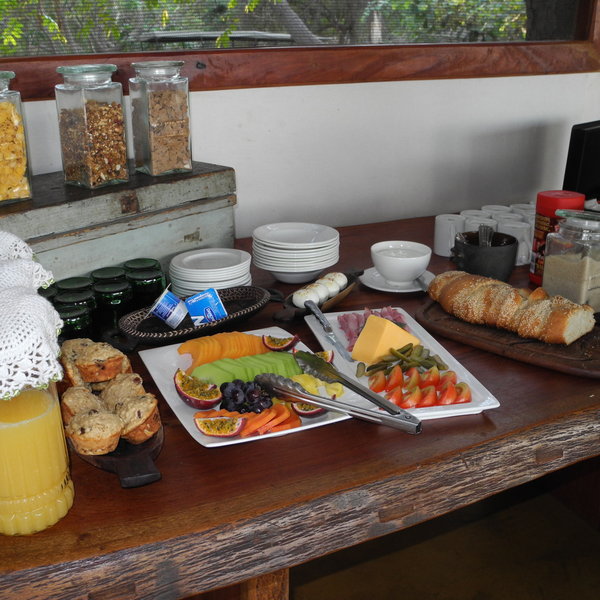
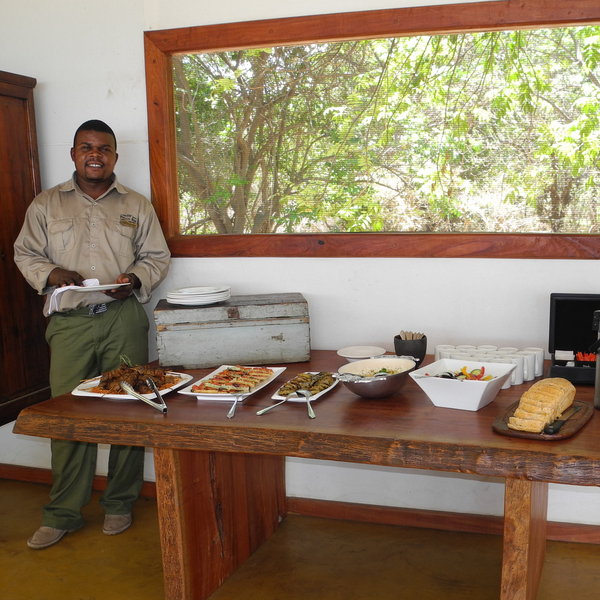
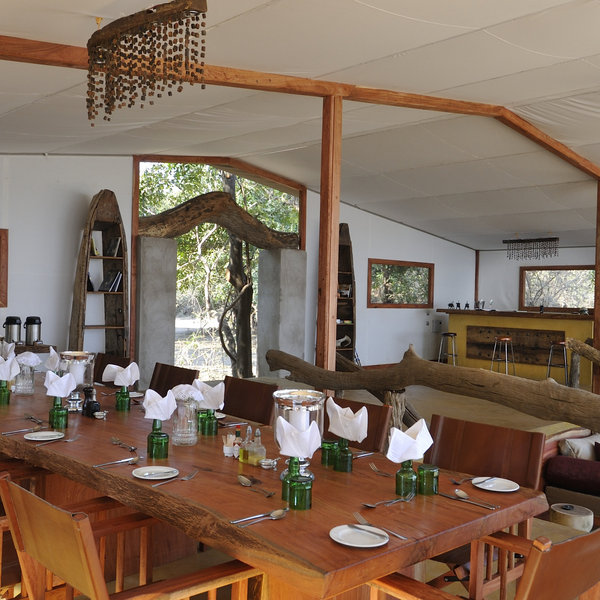
Expert Africa's gallery
When we travel we take lots of photos ourselves to give you a real and un-edited view of the trips. See our 17 pictures and 1 videos of Potato Bush Camp to get the candid view.
View galleryPotato Bush Camp: Our full report
Potato Bush Camp is located in a game-rich area of the Lower Zambezi National Park, overlooking the confluence ...
... of the Chifungulu Channel and the Zambezi River. The camp is small but fairly luxurious, and is open for a longer season than other camps in the area.
Just a short distance downstream from its sister property, Sausage Tree Camp, Potato Bush is more affordable than its larger and more established sibling, and is open for much longer at the end of the year. Indeed, it has been built with rain in mind, with raised wooden walkways connecting each area of the camp, thus keeping your feet out of any mud. This allows the camp to operate comfortably during the early stages of the rainy season, until the beginning of January.
The main area at Potato Bush is set back a small way from the river and is raised slightly above ground level. Constructed from moulded stone, it is covered by a large canvas tent that is open at one side, giving guests a fantastic view of the Zambezi and the wildlife that comes down to drink. These views can be enjoyed whilst eating meals at the long wooden dining table, having a drink from the well-stocked bar in the corner, or while lounging on the comfy sofas during the afternoon.
A short dirt path leads from the main area towards the river, to a campfire surrounded by canvas director’s’ chairs. This is a lovely spot for after-dinner drinks, or a cup of coffee while watching the sun rise. The path then continues towards the river to the camp’s small jetty.
At the back of the main area, the raised walkway extends to Potato Bush’s four tented rooms. Each of these is well constructed, its sturdy wooden frame covered with a neutral-coloured canvas.
- Three luxury tented rooms have floors and partitioning walls made from the same orange moulded stone as the main area, and the rooms at Sausage Tree Camp. In each room, double beds are positioned in front of large doors at the front, allowing you to enjoy the views of the river from the comfort of your bed. These doors lead out to a private deck, which is a pleasant spot to spend the afternoon in a deckchair, or in your own private plunge pool, while at night, they are closed for extra security.
Each of the en-suite bathrooms has a semi-open shower with a large open window that lets you look out over the Zambezi while you shower. The bathrooms also feature his and her basins and a flushing toilet. - A two-bedroom family tented room comes complete with a huge central living and dining area, a fully stocked fridge and a private balcony area, which is great for a family or a party of four adults. The balcony area includes a swimming pool and deckchairs for your afternoon siesta. Both bedrooms are en suite, with twin showers, claw-footed baths, his and hers basins and a flushing toilet.
Activities
4WD Safari
Birdwatching
Boat trip
Canoeing
Fishing
Guided walking safari
Night drive
Families & children
- Attitude towards children
- Children over the age of four are welcome at Potato Bush Camp, but note that the minimum age for walking and canoeing in the Lower Zambezi National Park is 12 years.
- Property’s age restrictions
- There is a minimum age of four years of age.
- Special activities & services
- Children’s programmes can be arranged, including such activities as spoor tracking, and making candles and cards.
- Equipment
- None
- Generally recommended for children
- We would recommend Potato Bush for sensible, mature children who are interested in wildlife and will understand the full safety implications of being in an area of dangerous big game.
- Notes
- Potato Bush Camp is located on the edge of the Zambezi River and within the Lower Zambezi National Park. There are no fences around the camp and dangerous animals do roam freely through the camp at any time of the day. The private plunge pools are not fenced. Parents must supervise children at all times.
Food & drink
- Usual board basis
- Full Board & Activities
- Food quality
- We have visited on multiple occasions and the food has been consistently excellent.
Just prior to your early-morning activity a light breakfast of toast, muffins, cereal, yoghurt and porridge is served around a camp fire on the riverbank, along with tea, coffee and fruit juices.
Lunch is served around midday in the main area of the camp.
Dinner is a three-course set menu, usually served at around 8.00pm. - Dining style
- Individual Tables
- Dining locations
- Indoor and Outdoor Dining
- Further dining info, including room service
- Yes
- Drinks included
- Drinks are included, except for champagne and premium imported wines and spirits.
Our travellers’ wildlife sightings from Potato Bush Camp
Since mid-2018, many of our travellers who stayed at Potato Bush Camp have kindly recorded their wildlife sightings and shared them with us. The results are below. Click an animal to see more, and here to see more on our methodology.

100% success

100% success

100% success

100% success

93% success

86% success

75% success

58% success

10% success

8% success

0% success

0% success

0% success
Getting there
- Location
- Lower Zambezi National Park, Zambia
- Ideal length of stay
- We recommend at least 3 to 4 nights to take maximum advantage of the variety of activities on offer.
- Directions
- The flight from Lusaka to Jeki airstrip takes approximately 35 minutes. From here, it’s around a 10-minute drive to the river, where a boat will transfer you to camp in about 40 minutes.
- Accessible by
- Fly-and-Transfer
Special interests
- Solo safaris
- Potato Bush offers a very personal experience in the Lower Zambezi. Activities and meals are shared making the camp very sociable, and there is no single supplement, making Potato Bush a more affordable option for solo travellers in Zambia than many other camps.
- See ideas for Solo safaris in Zambia
- Birdwatching safaris
- Potato Bush is great for birdwatching in Zambia, with land and water birds seen from drives, walks and canoeing. When last there, our best sightings included goliath herons, giant kingfishers, a Gabar goshawk and numerous fish eagles.
- See ideas for Birdwatching safaris in Zambia
- Wildlife safaris
- Potato Bush is one of the few camps in the game-rich Lower Zambezi National Park itself. This location, combined with excellent guides and a variety of activities, makes Potato Bush one of the best camps for a wildlife safari in Zambia.
- See ideas for Wildlife safaris in Zambia
Communications
- Power supply notes
- Power is available 24 hours a day. There are plug points in the tents for charging batteries.
- Communications
- There is no cell phone reception at Potato Bush Camp.
- TV & radio
- No
- Water supply
- Other
- Water supply notes
- The showers are plumbed in with hot and cold running water, and there are flushing toilets.
Health & safety
- Malarial protection recommended
- Yes
- Medical care
- The camp managers are first-aid trained. In an emergency guests would normally be evacuated by air to Lusaka and then possibly to Johannesburg.
- Dangerous animals
- High Risk
- Security measures
- Guests are escorted to their rooms after dark, and radios are provided in the tents to summon help in case of emergency.
- Fire safety
- There are fire extinguishers and a bucket of sand outside each tent.
Useful info
- Disabled access
- Not Possible
- Laundry facilities
- Full Laundry Service - Included
- Money
- No exchange facilities are offered. There are no safes in the tents, but valuables can be stored in the office safe if necessary.
Plan and book your trip with Expert Africa
All of our trips are tailor-made, so we'll always adapt them to suit you. Talk to an Expert and let us plan and arrange your perfect trip.

Talk to an Expert
Call or email us now! We’ll match you with the Specialist in our team who is best suited to help you. Then together we can start planning your trip.

Set up your itinerary
Based on our experience and your ideas, your specialist will create a detailed, costed itinerary. We’ll refine it together, until we have a trip that you’re perfectly happy with.

Prepare for your trip
The same Specialist will make the seamless arrangements for your trip, send you detailed travel documents, and be available to answer any questions before you depart.

Travel with peace of mind
After you set off, you’ll be cared for by our partners in Africa, most of whom have worked with Expert Africa for decades. And if you ever need us urgently, we’re available 24/7.

When you return
We love to learn about your trip, and so will always be grateful if you’ve the time to give feedback to your Specialist when you return.
Potato Bush Camp's location
Look closer at the environment and surroundings of Potato Bush Camp.
Other lodges in Lower Zambezi National Park
Alternative places to stay in this same area.
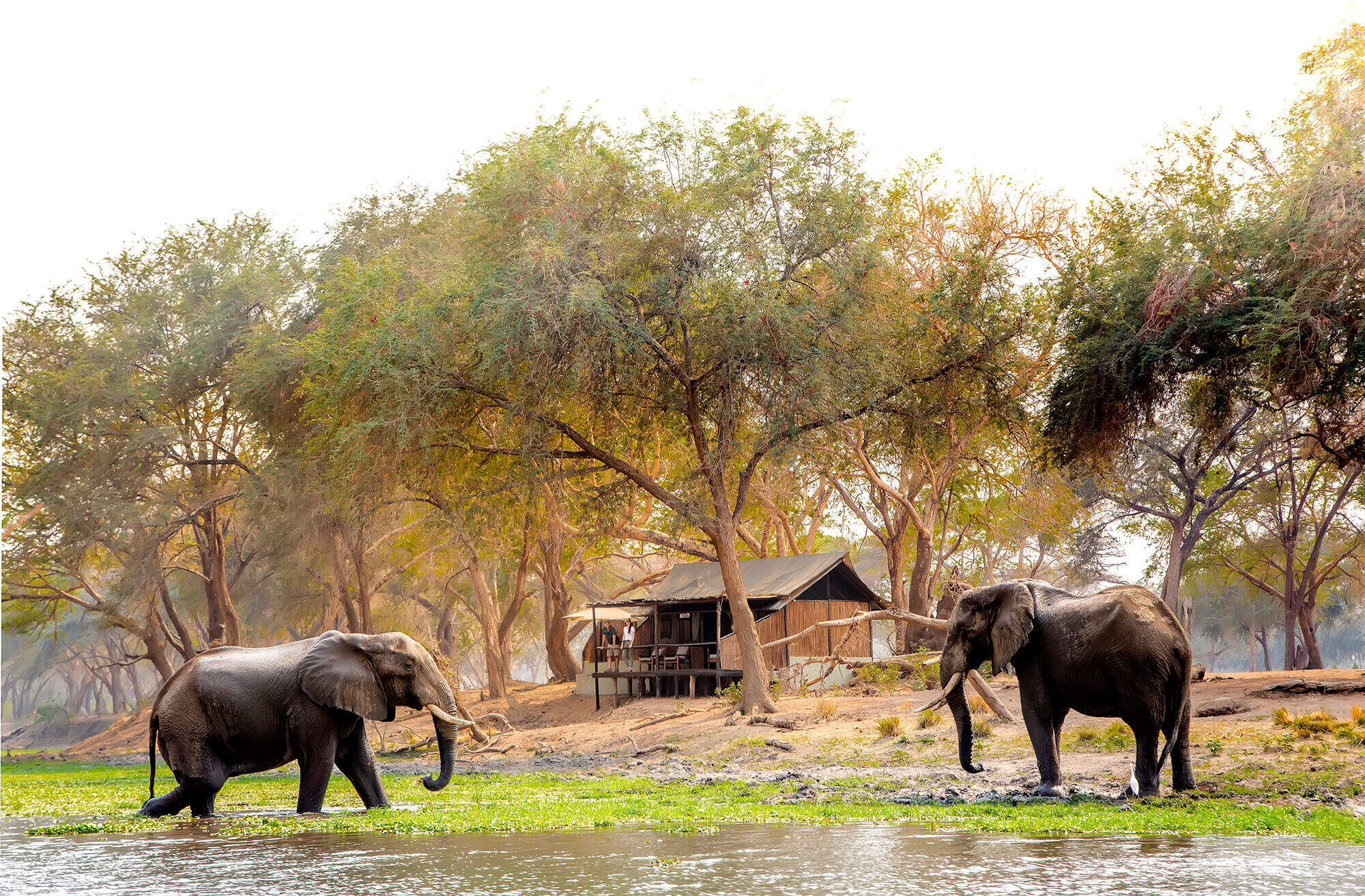
Old Mondoro Bushcamp
For an intimate safari in the Lower Zambezi, with superb guiding, Old Mondoro is up there with the best.
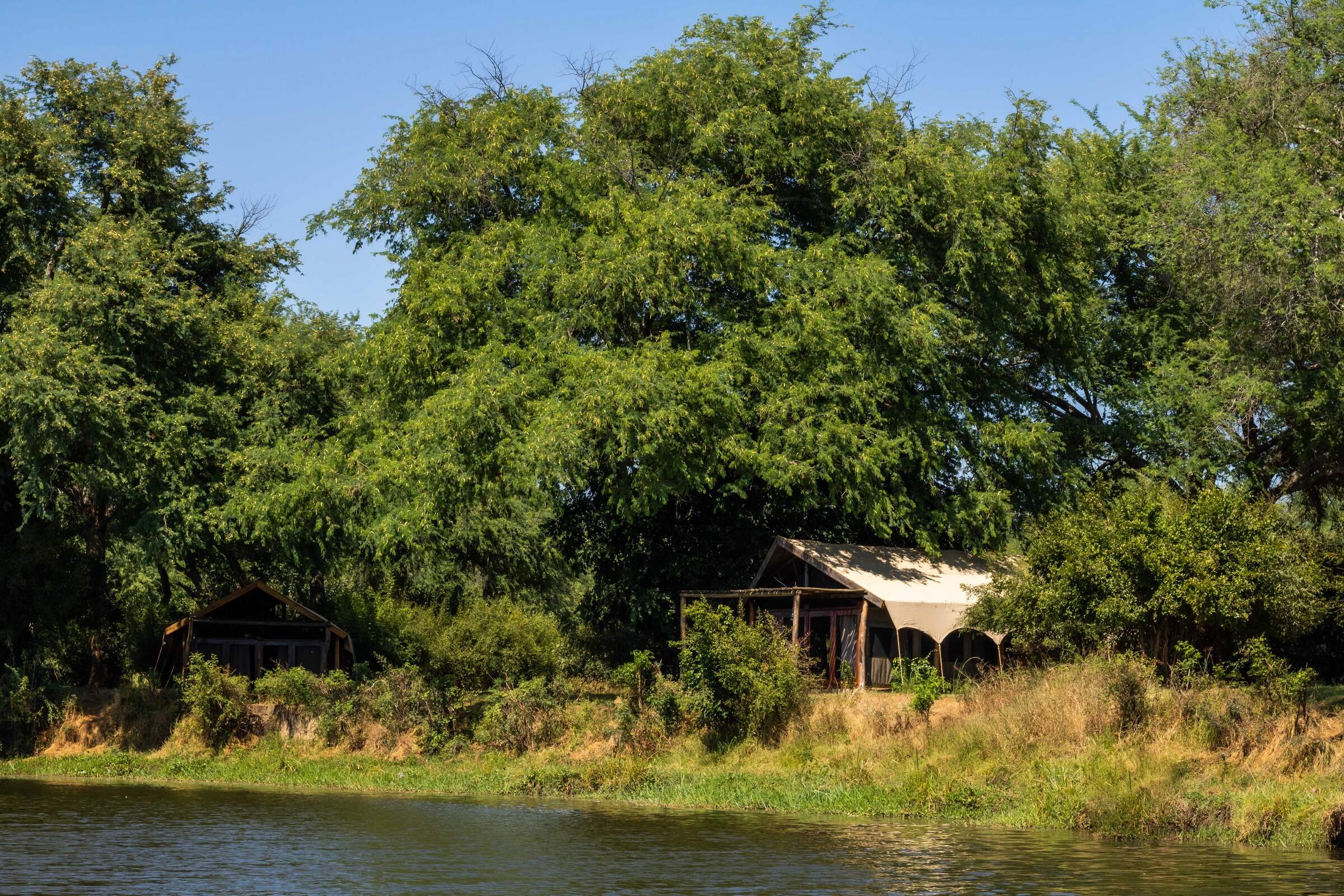
Chongwe River Camp
A blend of the stylish and traditional in a most picturesque site in the Zambezi Valley, Chongwe River Camp offers an excellent safari experience and real value for money.
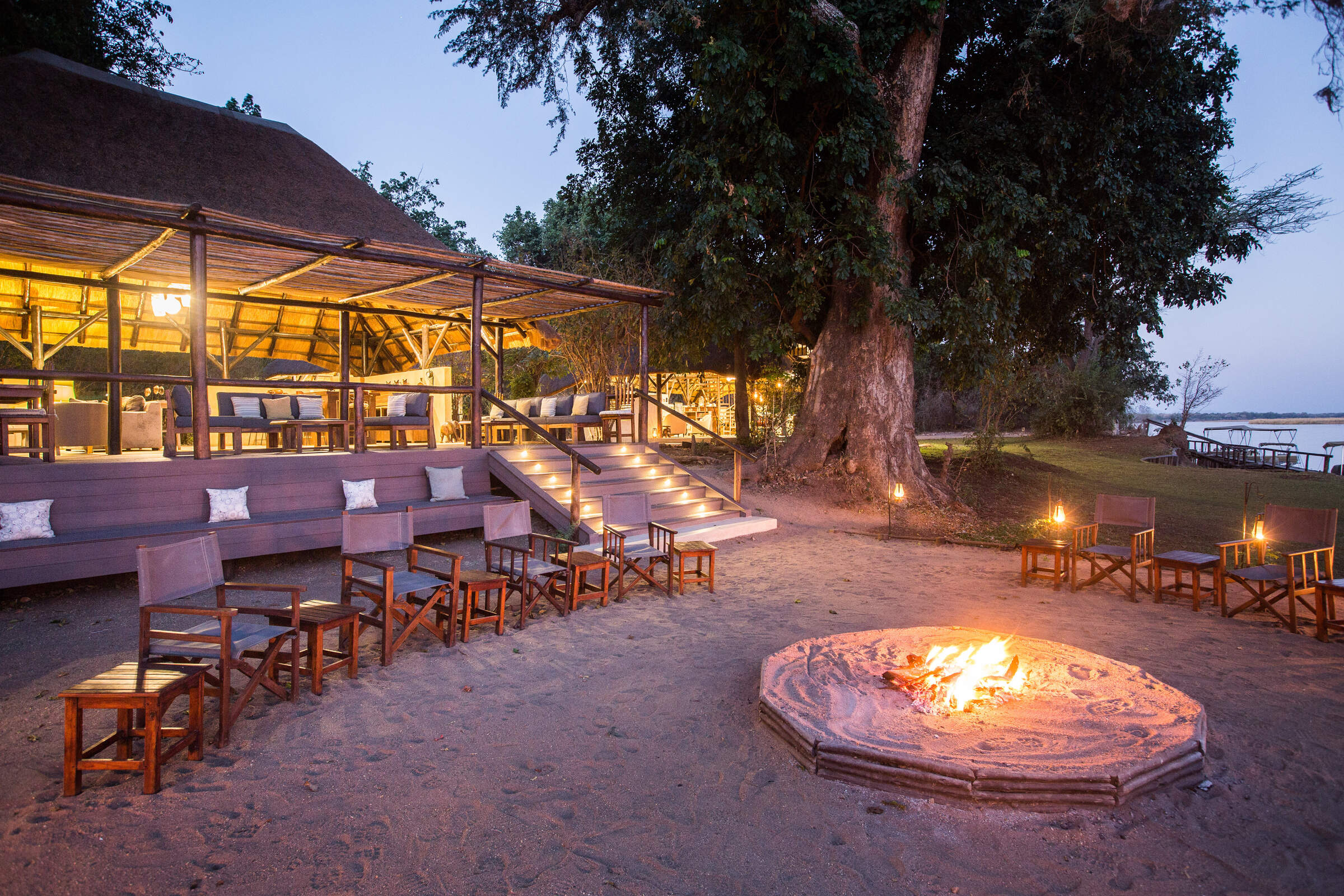
Chiawa Camp
One of Zambia's top safari camps, Chiawa is family owned and run, offering superb service and a flexible approach from a location well inside the Lower Zambezi National Park.
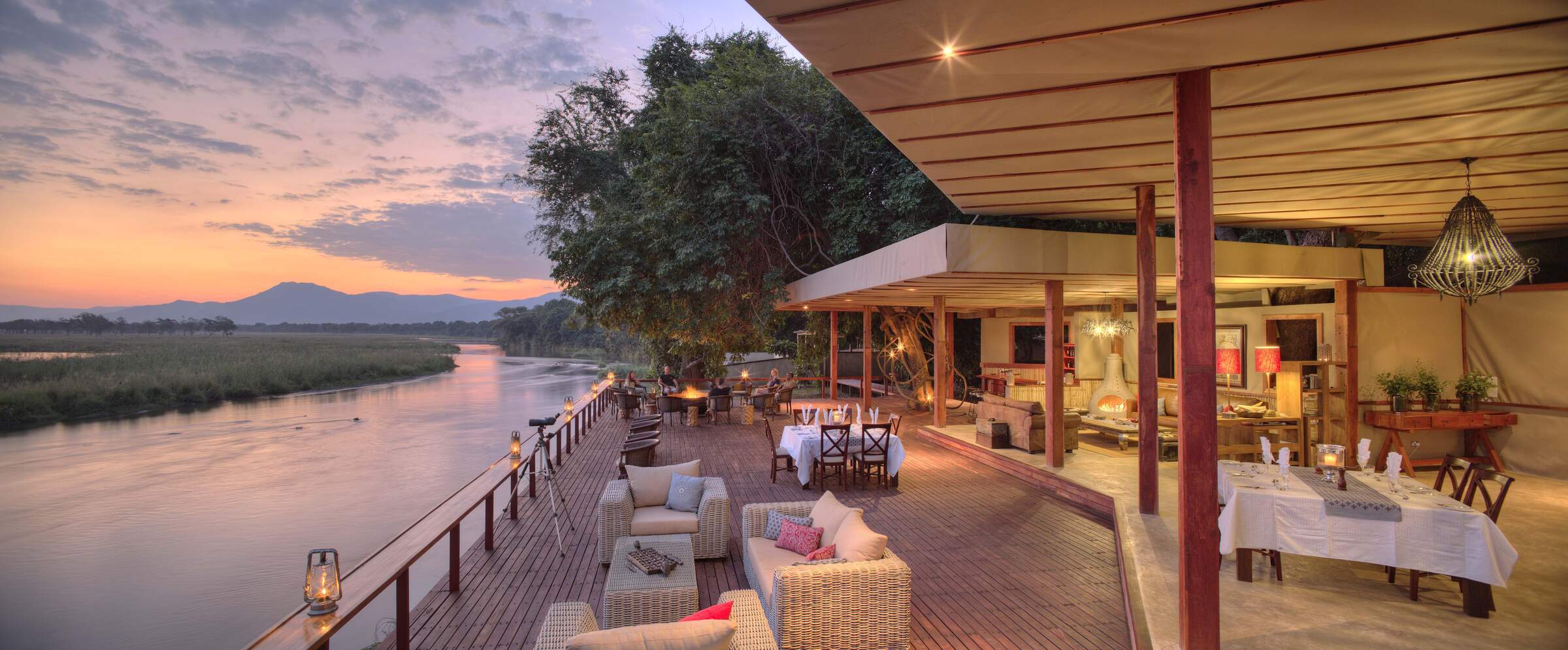
Sausage Tree Camp
Sausage Tree is a high-quality safari camp offering a luxurious stay and excellent personal service deep inside Zambia's Lower Zambezi National Park.
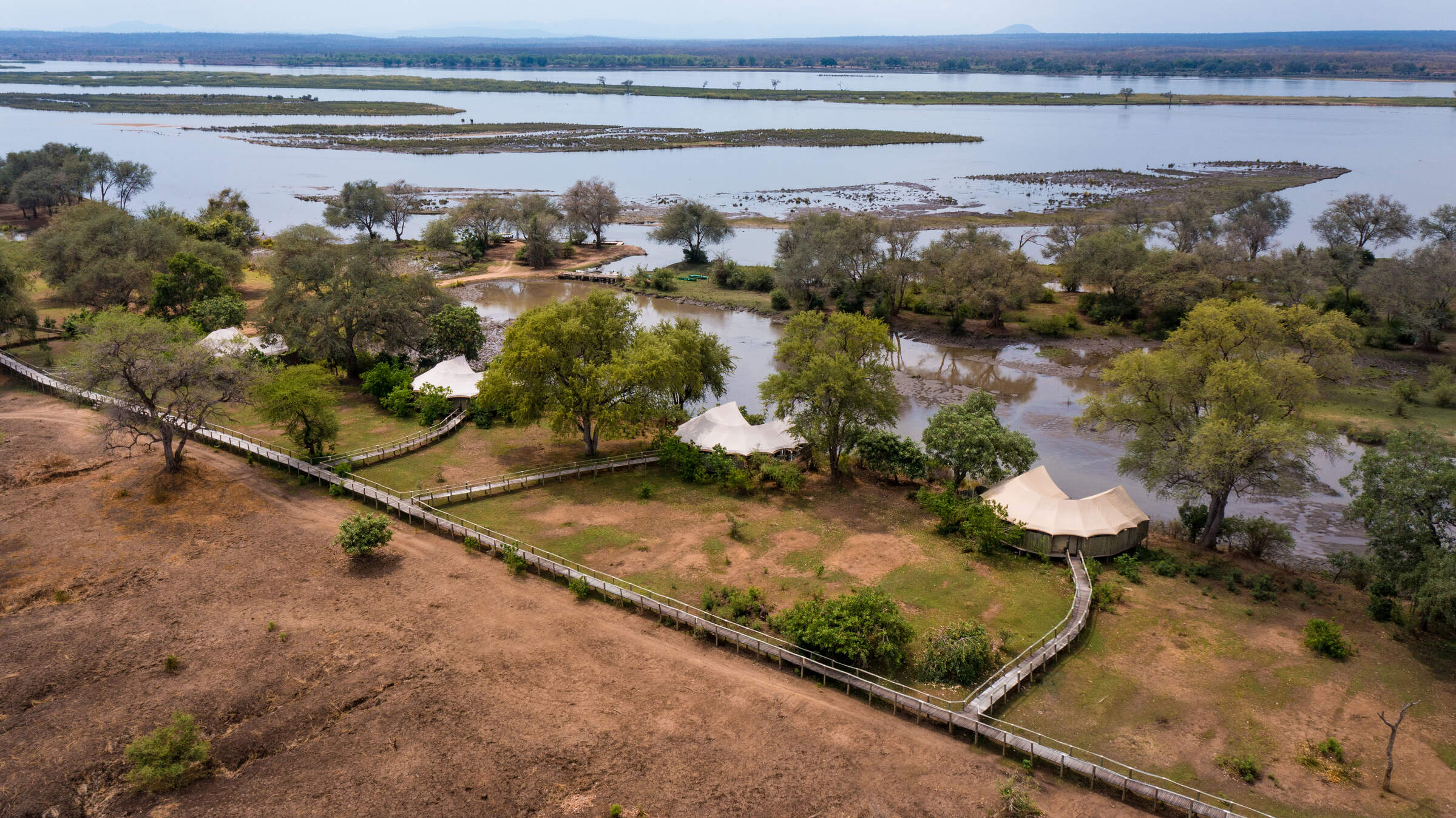
Anabezi Luxury Camp
Anabezi Luxury Tented Camp offers a high degree of understated luxury in a very lovely, quiet part of the Lower Zambezi with outstanding wildlife.
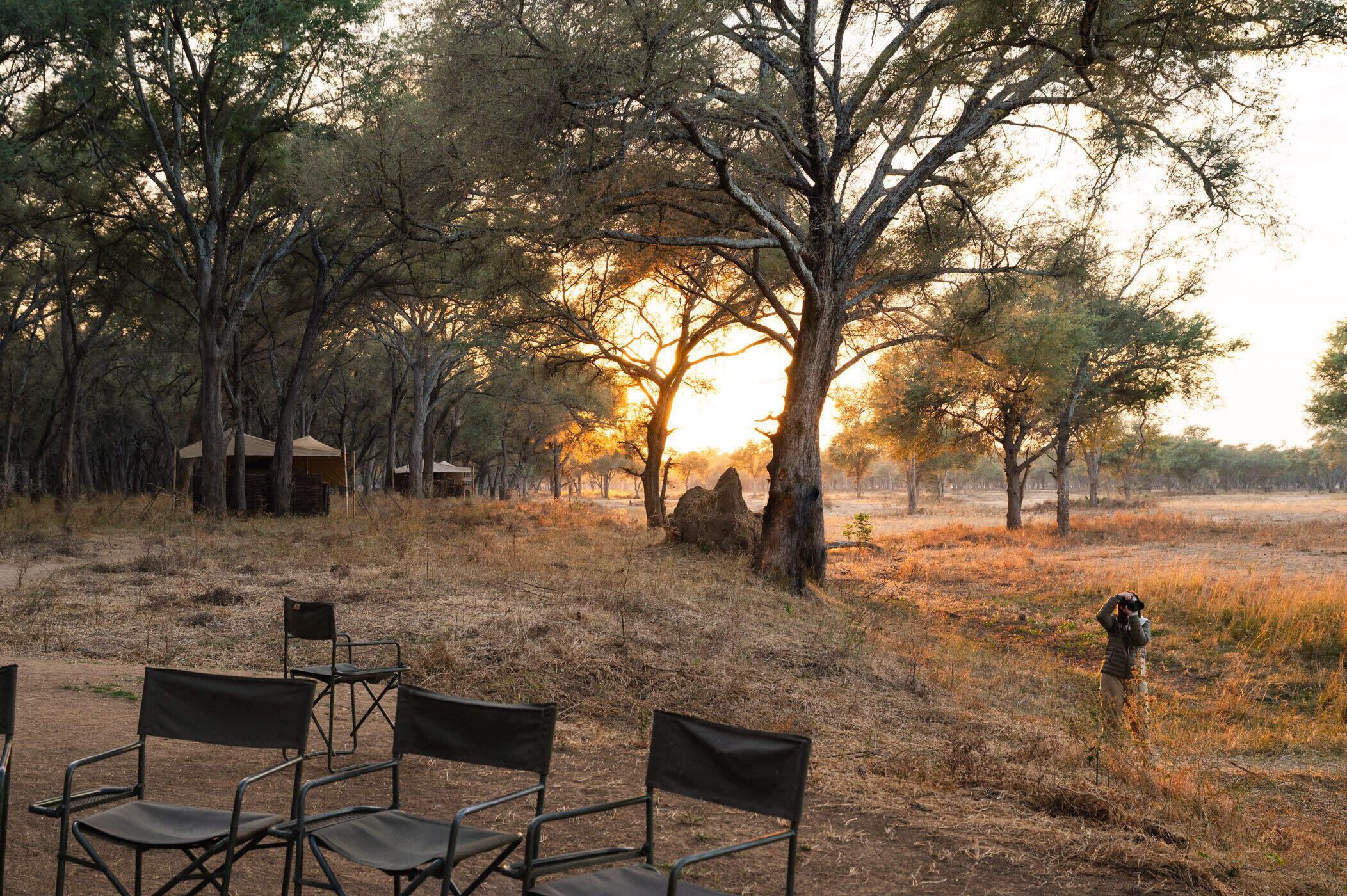
Kutali Camp
Kutali Camp offers the opportunity to experience the wilderness of Zambia’s Lower Zambezi National Park, in this simple tented camp located on Kulefu Island.
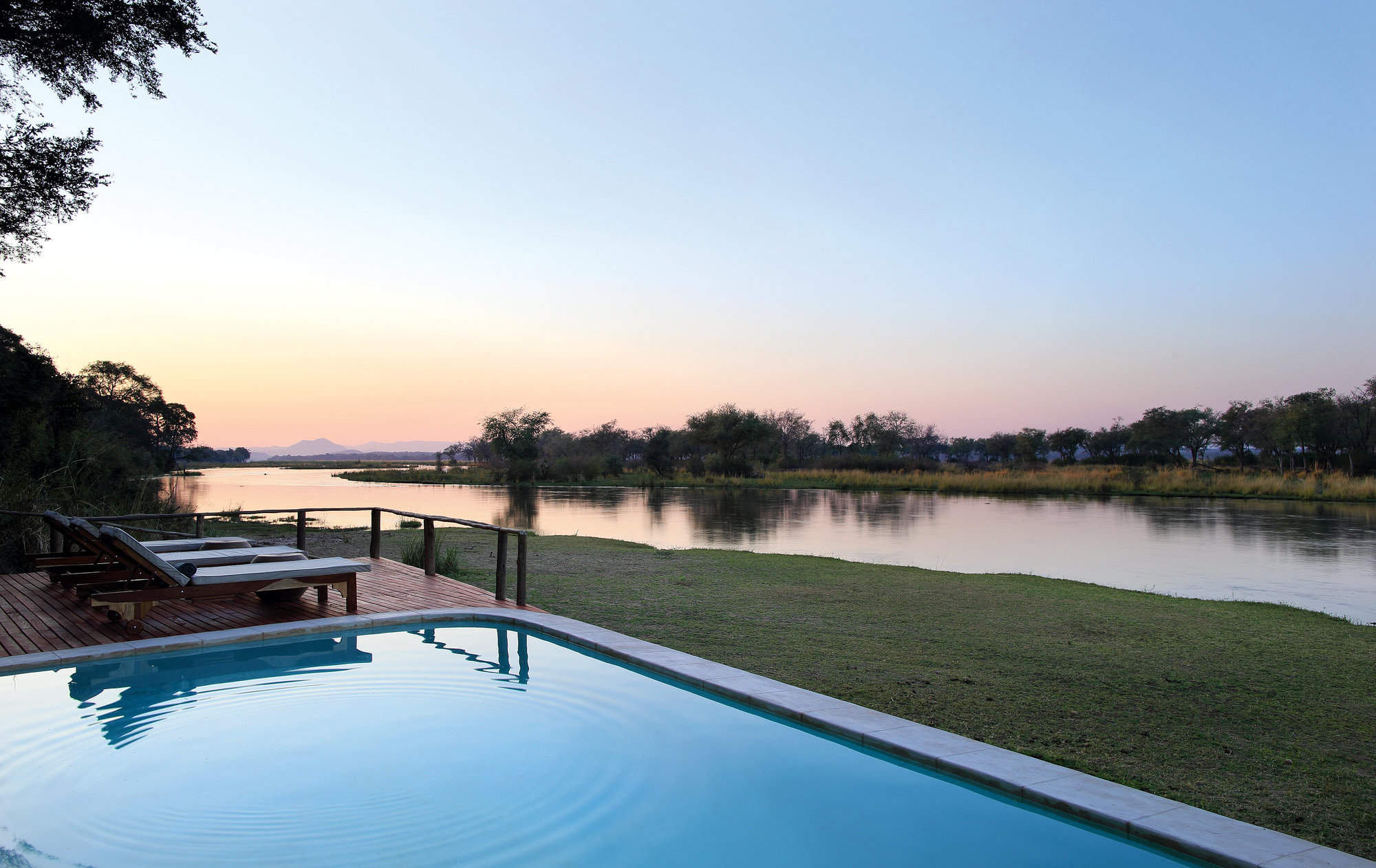
Amanzi
Opened in 2015, Amanzi is an intimate and rustic yet luxury camp in a very quiet area of the Lower Zambezi, with plenty of wildlife and good birding.
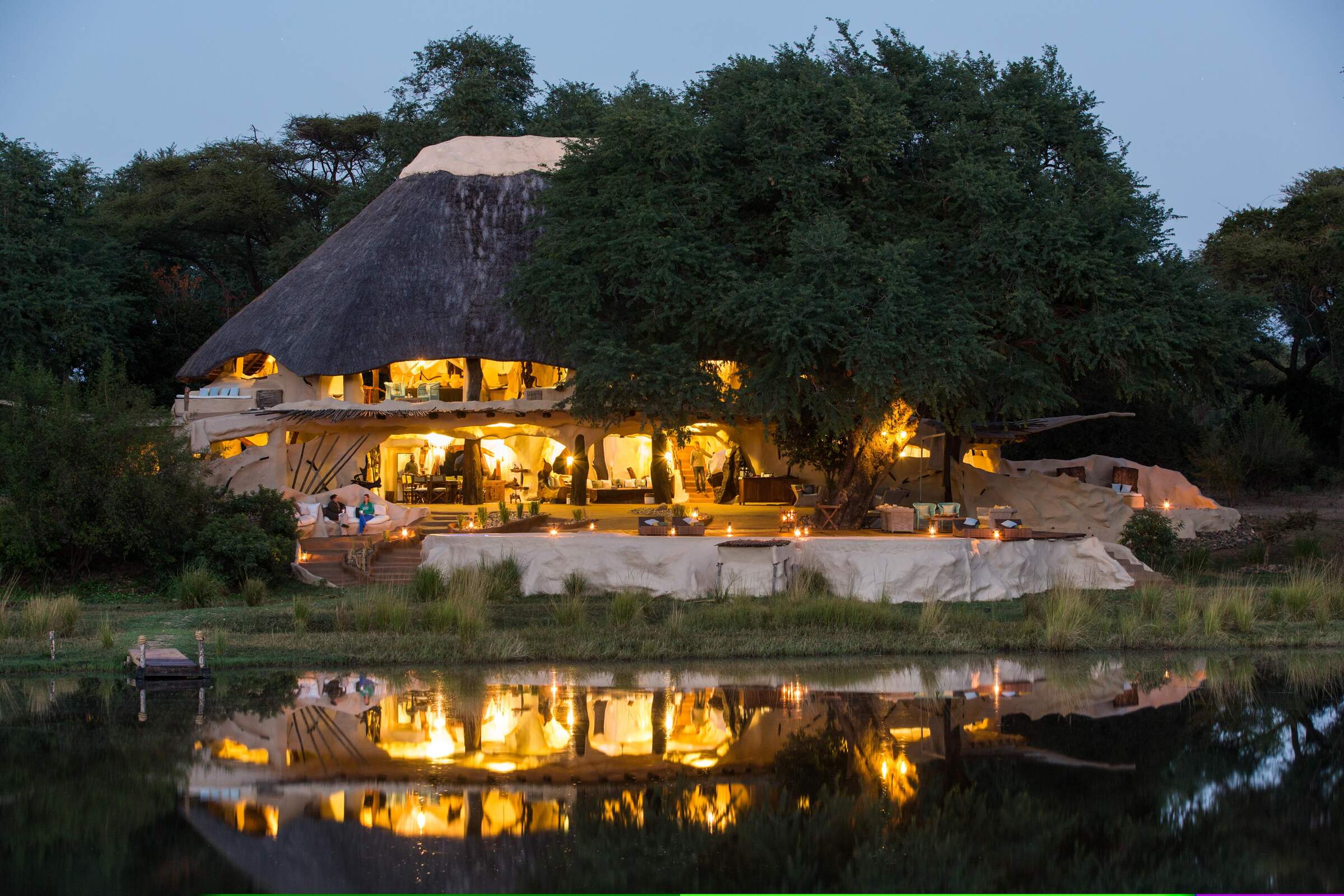
Chongwe River House
Chongwe River House is a stylish four-bedroom house designed for the exclusive use of families and small groups, affording the ultimate in flexibility on safari.
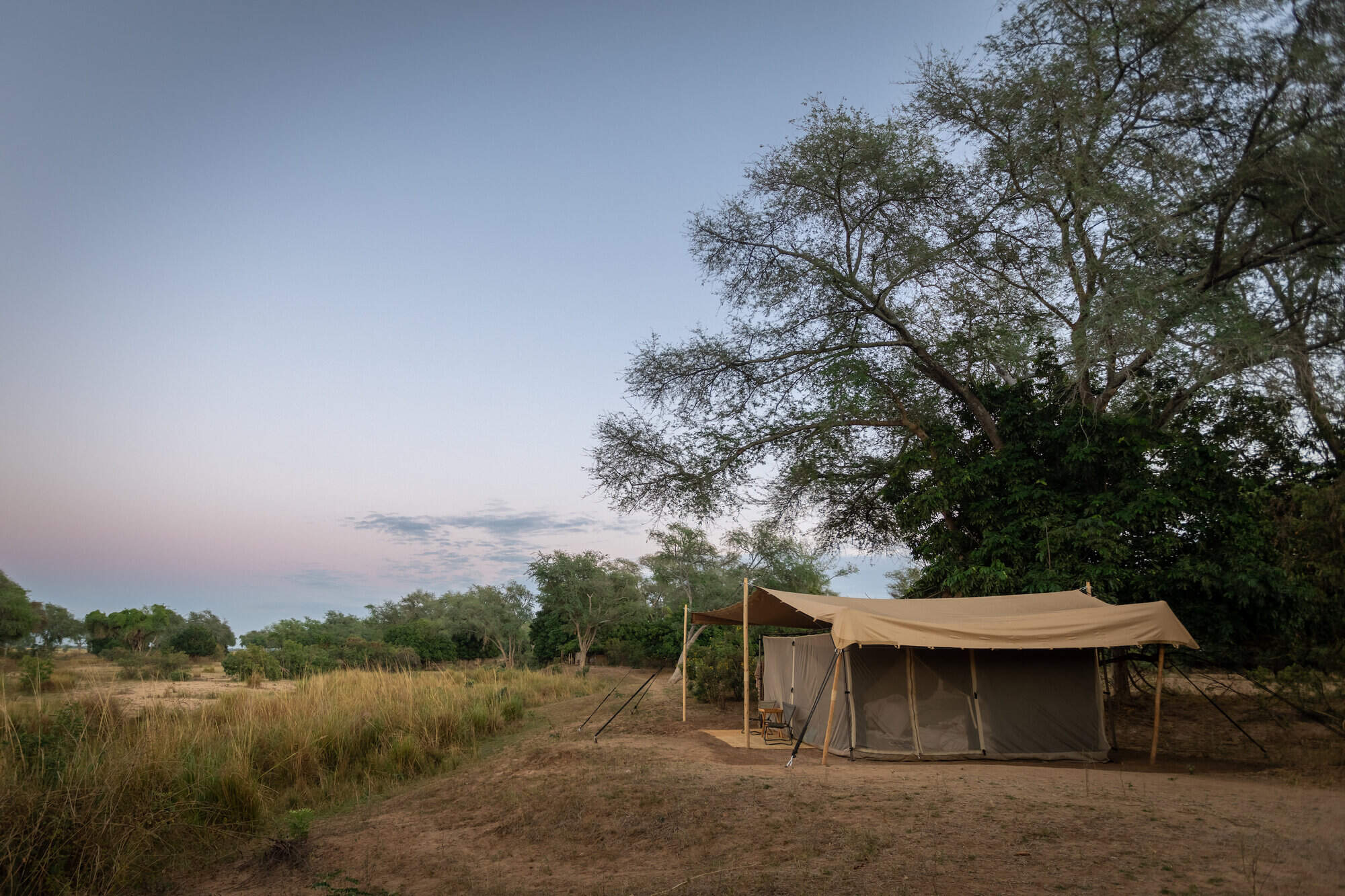
Chula Island Camp
Chula Island Camp offers the opportunity to experience the wilderness of Zambia’s Lower Zambezi National Park, in this simple fly-camp located in a natal mahogany grove on a small island on the Zambezi River.
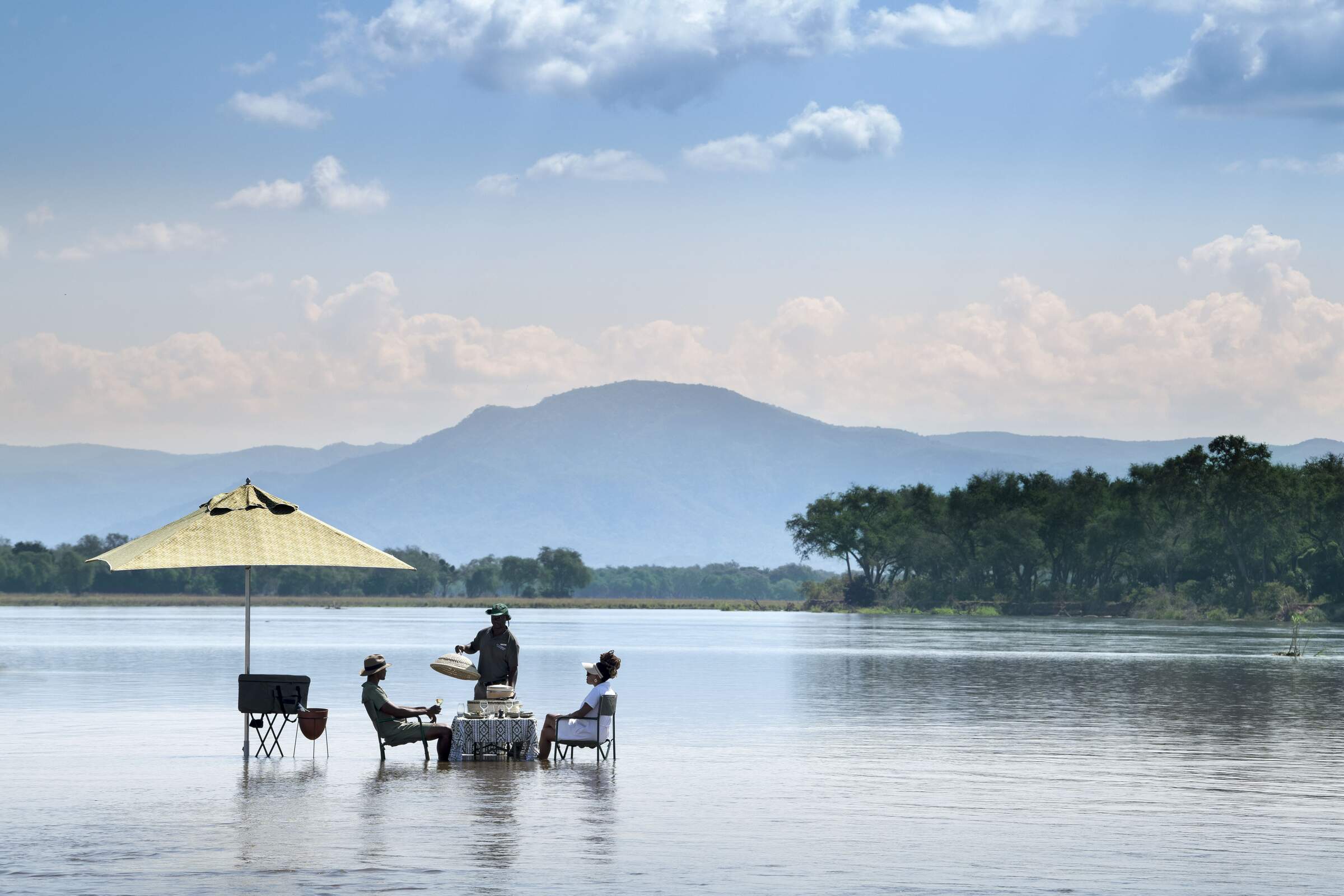
Lolebezi
A chic safari spot, luxurious Lolelbezi is the Lower Zambezi’s newest camp and offers a mix of walking, canoeing and game drives led by excellent guides.
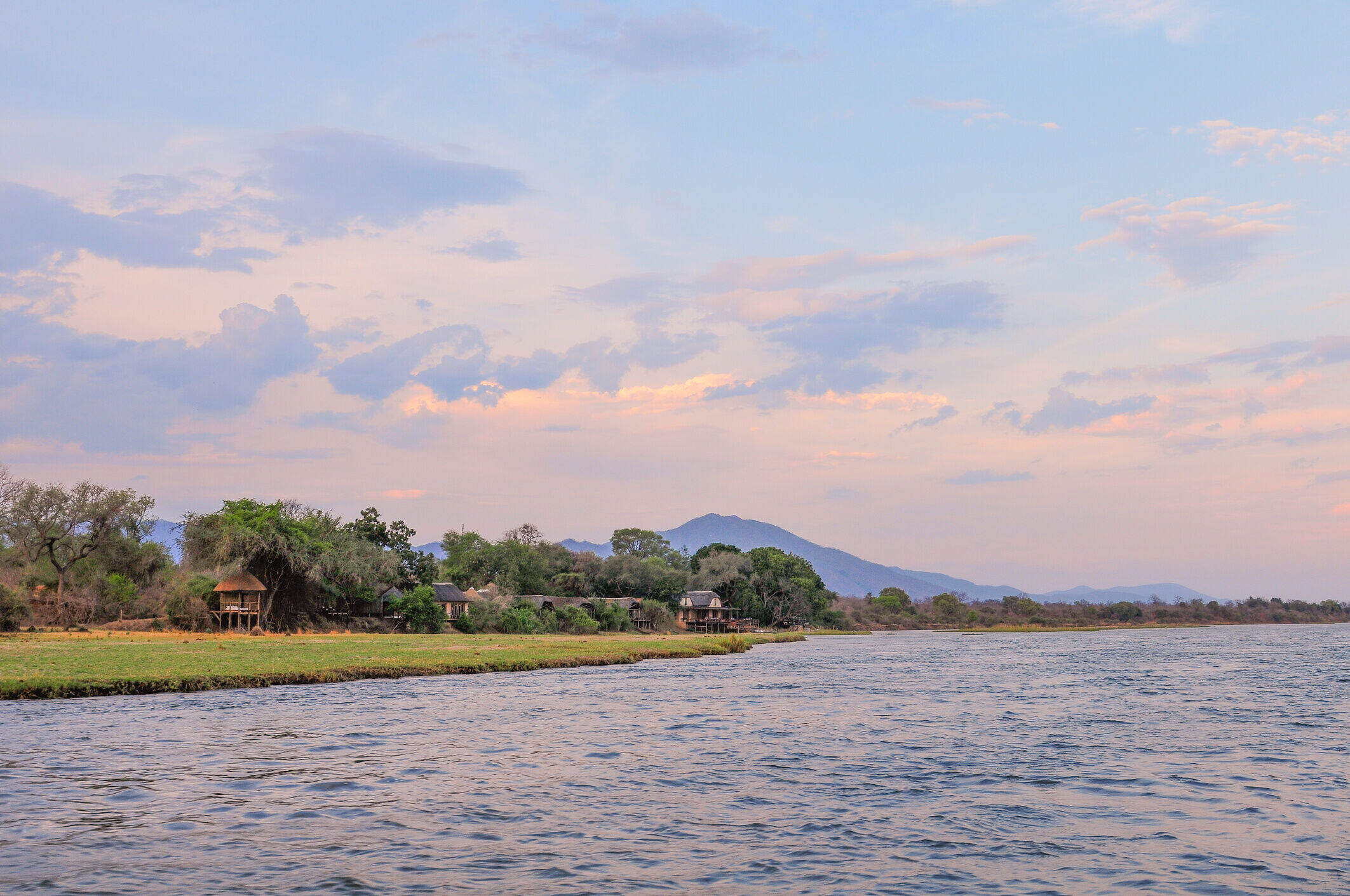
Royal Zambezi Lodge
This family-friendly lodge is located just on the outskirts of the Lower Zambezi National Park, in a great location overlooking the river.
When to go to Lower Zambezi National Park
Our month by month guide: What it's like to visit Potato Bush Camp in Lower Zambezi National Park
Jan
Feb
Mar
Apr
May
Jun
Jul
Aug
Sep
Oct
Nov
Dec
Lower Zambezi National Park in January
At the peak of Lower Zambezi's green season, expect heavy rainfall for a few hours on many days with sunny spells in between. Temperatures remain high, reaching over 30°C/86°F with high humidity. The landscape is lush and green, but wildlife disperses, making game viewing challenging. The thick vegetation limits walking safaris. However, this is an excellent time for birdwatching as migrant species boost the park's bird count.
Many camps close during this period, but those remaining open offer their lowest rates. The Zambezi River swells, creating spectacular scenes along its banks. Boat safaris can be particularly rewarding, offering chances to spot hippos, crocodiles, and various waterbirds. Despite the challenges, the park's beauty during this wet season is undeniable, with vibrant colours and dramatic skies.
- Peak of rainy season, hot and humid
- Most camps closed, limited accessibility
- Lush green landscape, great for photography
- Dispersed wildlife, challenging game viewing
- Lowest visitor numbers, cheapest rates
Our view
This is not a great time to visit
Weather in January
Lower Zambezi National Park in February
February remains in the heart of the green season in Lower Zambezi National Park. Dramatic thunderstorms deliver a few hours of rain most days, interspersed with clear sunny skies.
The abundance of water disperses game, making wildlife viewing more challenging. However, the swollen Zambezi River allows for unique boat safaris, offering close encounters with hippos and crocodiles. Birdwatching is excellent, with many migratory species present. The lush vegetation creates a picturesque backdrop for photography.
While game drives may be less productive, canoeing trips can be particularly rewarding, allowing quiet approaches to wildlife along the riverbanks. The few camps that remain open charge their lowest rates, providing an opportunity for budget-conscious travellers to experience the park's wet season beauty.
- Continued rainy season, hot and humid
- Many camps still closed, limited options
- Green landscape, photographic opportunities
- Difficult game viewing due to thick vegetation
- Low visitor numbers, affordable rates
Our view
This is not a great time to visit
Weather in February
Lower Zambezi National Park in March
March marks the last month of the green season in the Lower Zambezi. Heavy downpours still occur most days, with water levels at their highest. Temperatures reach over 30°C/86°F, with high humidity.
While many camps remain closed, those few remaining open offer unique wet season experiences. Boat safaris are particularly exciting, with the swollen Zambezi River providing extended exploration areas. Wildlife sightings may be sporadic, but many animals are raising young, offering heartwarming scenes.
Predators like lions and wild dogs are active, taking advantage of vulnerable prey. The lush, green landscape and clear air create stunning photographic opportunities. Birdwatching remains excellent as thousands of birds prepare for their winter migration. Despite challenges, March offers a different perspective of the park's ecosystem.
- Late rainy season, occasional showers
- A few camps begin to reopen
- Landscape still green, good for photography
- Improved wildlife viewing as vegetation thins
- Few visitors; rates for camps low
Our view
This is not a great time to visit
Weather in March
Lower Zambezi National Park in April
As the rains transition to lighter, sporadic showers, April marks a period of change in Lower Zambezi National Park. The landscape remains exceptionally green and lush. While larger wildlife viewing may be sparse, this is an excellent time for birding enthusiasts.
The Zambezi River is at its highest, creating spectacular scenes along its banks. Boat safaris offer unique perspectives of the flooded landscape. As camps slowly start to reopen, visitors can enjoy lower off-season rates. The park's famous canoe safaris become increasingly viable as water levels stabilise.
Night game drives can be particularly rewarding, offering chances to spot nocturnal animals like civets and genets. April's transitional nature provides a blend of wet and dry season experiences.
- End of rainy season, drier conditions
- More camps open, better accessibility
- Landscape transitioning, good for photos
- Improved game viewing, animals more visible
- Visitor numbers rise, rates remain low
Our view
This is not a great time to visit
Weather in April
Lower Zambezi National Park in May
May typically marks the start of the dry season in the Lower Zambezi. While there's a chance of an odd shower, most days are clear and sunny. As winter approaches, daytime temperatures reach highs of around 26°C/79°F. The landscape begins to dry out, improving access throughout the park.
Most camps reopen, offering a wider range of accommodation options. Game viewing improves significantly as animals start to congregate around permanent water sources. Boat safaris on the Zambezi River become increasingly popular, offering close encounters with hippos, crocodiles, and various bird species.
Walking safaris resume, providing intimate wildlife experiences. May's pleasant weather and improved game viewing make it an excellent time to visit, with some camps still offering shoulder season rates.
- Start of dry season, cooler temperatures
- Most camps open, full range of activities
- Landscape drying, clearer wildlife sightings
- Excellent time for walking safaris
- Visitor numbers increase, rates go up
Our view
A good time to visit, with pros & cons
Weather in May
Lower Zambezi National Park in June
The Lower Zambezi sees virtually no rainfall in June, with sunny days predominating. Humidity drops dramatically, and temperatures range from 10°C/50°F at night to 25°C/77°F during the day. The landscape remains relatively lush, but vegetation starts to thin, significantly improving game viewing.
All camps in the park are open, some offering shoulder-season rates. The Zambezi River's water levels begin to recede, concentrating wildlife along its banks. This is an excellent time for canoe safaris, offering unique perspectives of the park's ecosystem.
Game drives become increasingly productive, with higher chances of spotting predators like lions and leopards. June's pleasant temperatures and improved wildlife sightings make it a popular month for visitors.
- Dry season, cool days and cold nights
- All camps open, peak activity options
- Improved wildlife viewing around water sources
- Prime time for walking safaris and game drives
- High season begins, increased rates
Our view
A very good time to visit
Weather in June
Lower Zambezi National Park in July
As the dry season continues in Lower Zambezi National Park, vegetation thins and water becomes scarcer. Wildlife is starting to cluster around major water sources, particularly the Zambezi River, leading to excellent game viewing opportunities.
July marks the heart of winter, with daytime temperatures in the 20s Celsius / 70s Fahrenheit but dropping to single digits at night. Early morning and late evening game drives can be very chilly, with camps often providing blankets and hot water bottles.
This is prime time for walking safaris, offering exciting wildlife encounters. Canoe trips on the Zambezi River are particularly rewarding, with high chances of spotting elephants coming to drink. Visitor numbers increase, and properties charge peak season rates.
- Peak dry season, clear skies
- Excellent game viewing, especially near river
- Popular time for canoe and boat safaris
- Night drives offer nocturnal wildlife sightings
- Peak season, highest rates and visitor numbers
Our view
A very good time to visit
Weather in July
Lower Zambezi National Park in August
August in the Lower Zambezi offers excellent game viewing as wildlife congregates around remaining water sources. With virtually no chance of rain, sunny days are almost guaranteed. Temperatures can drop below 5°C/41°F at night but climb to the 20s Celsius / 70s Fahrenheit during the day.
The thinned vegetation provides clear views of animals, making this one of the best months for photography. Boat safaris on the Zambezi River offer close encounters with hippos, crocodiles, and elephants. Tiger fishing is at its peak, attracting anglers from around the world.
Walking safaris provide thrilling up-close wildlife experiences. This is one of the most popular months to visit, with camps charging their highest rates and often fully booked well in advance.
- Very dry, animals concentrate near water
- Outstanding wildlife viewing opportunities
- Ideal for photography and walking safaris
- Zambezi River cruises highly recommended
- Peak season continues, advance booking needed
Our view
Fantastic: the very best time to visit
Weather in August
Lower Zambezi National Park in September
September is one of the best times to visit Lower Zambezi National Park for wildlife enthusiasts. Rain is almost unheard of, humidity is low, and daytime temperatures climb to the low 30s Celsius / high 80s Fahrenheit.
Water is scarce, concentrating wildlife around the Zambezi River and remaining water holes. Game viewing is at its peak, with high chances of seeing predator-prey interactions. Elephant herds are frequently spotted crossing the river.
Canoe safaris offer thrilling close encounters with wildlife. Night game drives provide opportunities to spot nocturnal animals like leopards and genets. Birdwatching remains excellent, with many species nesting. However, this popularity comes at a price: camps charge their highest rates and are often fully booked far in advance.
- Hot days, warm nights, very dry
- Excellent month for wildlife viewing
- Zambezi River at its lowest, great for canoeing
- Increased elephant sightings near water
- High season, camps can be fully booked
Our view
Fantastic: the very best time to visit
Weather in September
Lower Zambezi National Park in October
October marks the peak of the dry season in the Lower Zambezi. Away from the Zambezi, the national park is brown and barren, with little ground-level vegetation. Temperatures can be uncomfortably hot, often exceeding 40°C/104°F during the day.
Despite the heat, this is considered the best month for game viewing. The scarcity of water forces animals to congregate around the main river, leading to frequent wildlife sightings and predator-prey interactions.
Boat safaris offer relief from the heat and excellent opportunities to observe elephants, hippos, and crocodiles. Walking safaris may be challenging due to the heat but provide thrilling wildlife encounters. October is prime time for spotting large predators like lions and leopards.
- Hottest month, animals congregate at river
- Peak time for wildlife viewing and photography
- Excellent for boat safaris and fishing
- Chance to see elephants crossing the river
- End of high season, some rate reductions
Our view
A very good time to visit
Weather in October
Lower Zambezi National Park in November
November typically marks the end of the dry season in the Lower Zambezi. While the timing of rains is uncertain, temperatures remain high and humidity builds.
Early November may still offer excellent game viewing, with animals concentrated around water sources. As the month progresses, the arrival of rains leads to rapid vegetation growth and wildlife dispersal. This transition period can be fascinating to witness. The initial rains bring relief to the parched landscape, with new growth attracting grazing animals.
Birdwatching improves as migratory species arrive in the valley. While some remote camps close, those that remain open significantly drop their rates. November offers a unique opportunity to experience both dry and wet season aspects of the park.
- Start of rainy season, occasional showers
- Wildlife disperses as water becomes available
- Good birding as migratory species arrive
- Lush landscapes return, photography improves
- Shoulder season, lower rates and fewer visitors
Our view
A good time to visit, with pros & cons
Weather in November
Lower Zambezi National Park in December
December marks the start of the green season in the Lower Zambezi National Park. Heavy thunderstorms occur most days, interspersed with sunny spells. Temperatures reach over 30°C/86°F with high humidity.
The rainfall brings abundant water to the landscape, encouraging lush vegetation growth. While game viewing becomes more challenging due to the thick bush and dispersed wildlife, this is an excellent time for birdwatching. Migratory birds arrive, boosting the species count. Boat safaris on the swollen Zambezi River offer unique perspectives of the flooded landscape.
Many camps close for the season, but those remaining open charge their lowest rates. Despite the challenges, December offers a green and vibrant aspect of the park, with dramatic skies and fewer visitors.
- Rainy season in full swing, hot and humid
- Some camps close, limited accessibility
- Newborn animals, great for bird watching
- Challenging game viewing, but lush scenery
- Low season, cheapest rates, fewer tourists
Our view
This is not a great time to visit
Weather in December

Looking for inspiration on where to travel next?
Visit our trip chooser to explore your options and find inspiration for your perfect African adventure
Inspire me